Conservatories have always been one of the most popular ways to maximise a property’s space. Nonetheless, getting the green light to build one isn’t always as straightforward as it seems. Single-storey extensions are usually permitted without planning permission, provided they meet certain conditions. However, when construction plans breach these conditions, homeowners have to jump several hurdles before they can begin building their dream conservatory. In this article, we’ll dive into conservatory specifics and outline when planning permission is required.
With over 20 years of experience building conservatories with double glazing in Harpenden and surrounding areas, the CS Windows team are expertly placed to answer the question: ‘Do you need planning permission for a conservatory?’
Do You Need Planning Permission For A Conservatory: Complete Guide
With so many rules and regulations, it can be difficult to understand when you need planning permission and when you don’t. This extensive guide aims to clear up your construction queries and help you start building your dream conservatory.
- What Is Planning Permission?
- What Is Permitted Development?
- Do I Need Planning Permission For A Conservatory?
- Conservatory Building Regulations 2024
- Do You Need Planning Permission To Change A Conservatory Roof?
- How Large Can A Conservatory Be Without Planning Permission?
- When Does A Conservatory Become An Extension?
- How Do I Apply For Planning Permission For A Conservatory?
- Do You Need Building Regulations For A Conservatory?
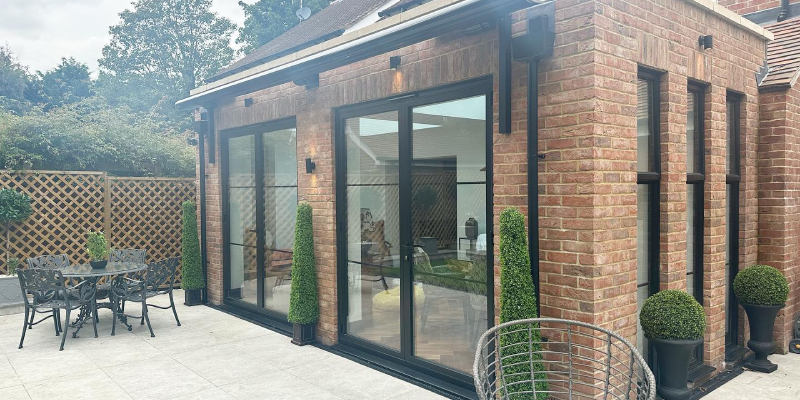
What Is Planning Permission?
Planning permission is the approval of local authorities to allow the building of, or changes to, a building. Sometimes referred to as planning consent, each local authority has a different approach to the rules. It’s important to know who your local authority is so you can understand how they approach planning permission – this can be done here. Each local authority has a different set of planning permission rules dependent on the context of the area. For example, authorities in Areas of Natural Beauty are far more strict when granting planning permission as they want to preserve the landscape.
The planning permission rules vary depending on the type and scale of construction. Going ahead with a project that requires planning permission before gaining consent can have serious consequences. Often, you will be forced to demolish the building work or put it right later, which will be very costly. It’s also important to understand that properties that have undergone illegal work are unmortgageable, meaning they’re almost impossible to sell. Regardless of the project you intend to undertake, it’s always best to contact your local planning department before you proceed.

What Is Permitted Development?
Often, construction projects will fall under permitted development. These rules allow homeowners to build on a smaller scale without applying for planning permission. Conservatories and single-storey extensions usually fall under permitted development, meaning homeowners are free to build them without approval from their local authority.
If you live in a designated area, you may find that your permitted development rights are restricted. Designated areas have extra scrutiny attached to any renovation or extension work, often because the local authorities are trying to preserve the area’s current state. Designated areas include Conservation Areas, Areas of Outstanding Natural Beauty or National Parks.
Permitted development rights fall into five categories:
Class A: Extensions
- A single-storey side extension up to half the width of the existing property.
- A single-storey rear extension up to 8m in length for a detached property and 6m long for a semi or a terraced house.
- In some instances, 3m two-storey rear extensions.
Class B: The Roof
Rear dormers and hip-to-gable extensions can be created if the additional volume does not exceed 50m3 (or 40m3 in the case of semis or terraced homes).
Class C: Other Roof Altercations
Class D: Porches
Class E: Outbuildings
Outbuildings can be built within residential grounds, provided they sit behind the property and do not cover more than 50% of the grounds. They can’t be any more than 3m in height, 4m for dual-pitched roods or 2.5m if within 2m of the property’s boundary.
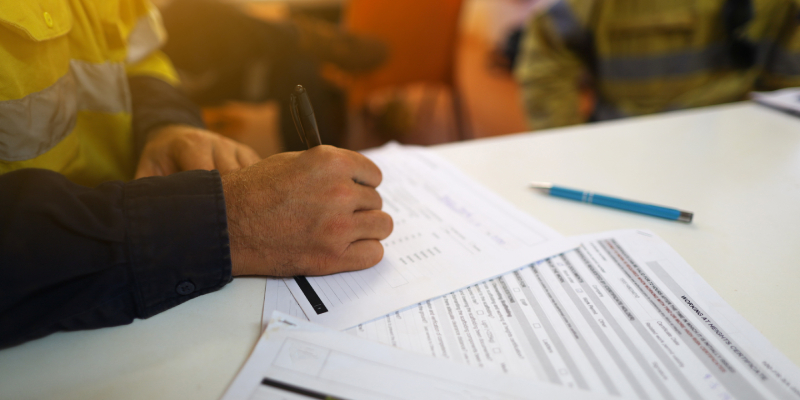
Do I Need Planning Permission For A Conservatory?
Conservatories fall under class A of the permitted development rights. That means you can build a conservatory without planning permission if it is a maximum height of 4m (3m if it’s within 2m of a boundary). It’s also essential that your planned conservatory does not cover more than half of your garden.
You will need planning permission to build your conservatory at the front of your house. This refers to the front of the ‘original house’ as it stood on 1st July 1948.
If you’re still unsure whether you’ll need planning permission for your new conservatory, check out the guides provided by Planning Portal. Their interactive 3D tool helps you plan home improvement projects, allowing you to take the first steps in constructing your conservatory.
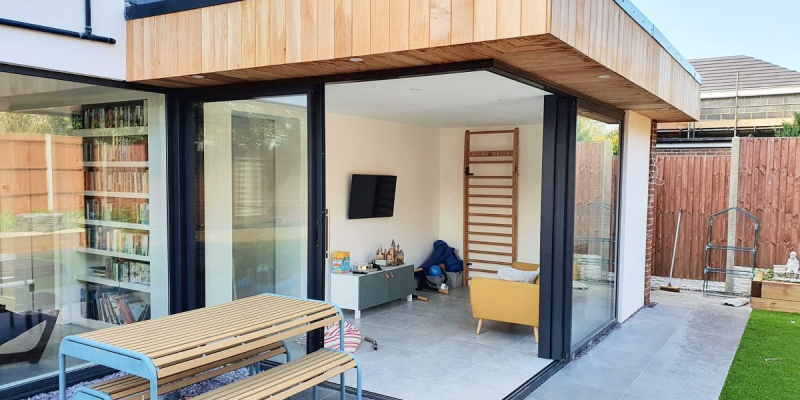
Conservatory Building Regulations 2025
In 2024, there were some major regulatory changes to the standards conservatories in the UK must meet. These are largely focused on efficiency and sustainability as increased efforts are being made to minimise the environmental impact of conservatory construction. We’ve reviewed these regulations and they remain the most up to date guidelines for building conservatories in the UK. Here are a few things included in the recent changes:
- Minimum insulation changes were introduced to reduce heat loss.
- New conservatories are required to include certain percentages of recycled or eco-friendly materials.
- The permissions process was made easier to make it easier to follow these new rules.
- Contractors are required to get more training in sustainable building best practices.
As a result of these changes, the cost of a conservatory is likely to increase slightly, but homeowners should save money on utility bills over time.
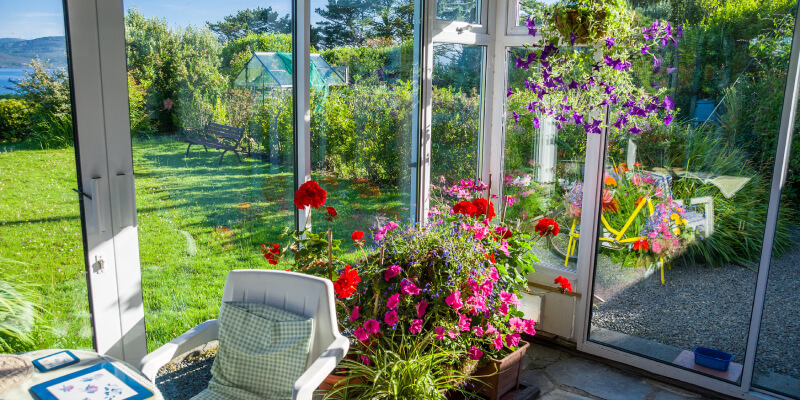
Do You Need Planning Permission To Change A Conservatory Roof?
Simply put, you no longer need planning permission to change a conservatory roof. Previously, specific percentages of the roof had to be translucent to be exempt from planning permissions. However, the new rules allow homeowners to change their conservatory roof without further planning permission applications.
Despite this, roof reconstructions must continue to follow the limitations that all single-storey extensions adhere to. This means the conservatory cannot extend past the property’s rear wall, and the roof cannot exceed the height of the main property.
Homeowners should also consider the structural integrity of their current conservatory and whether a roof replacement will negatively impact these foundations. At CS Windows, all of our conservatories come with a ten-year warranty, so it’s also important to understand how a roof renovation might impact this guarantee.
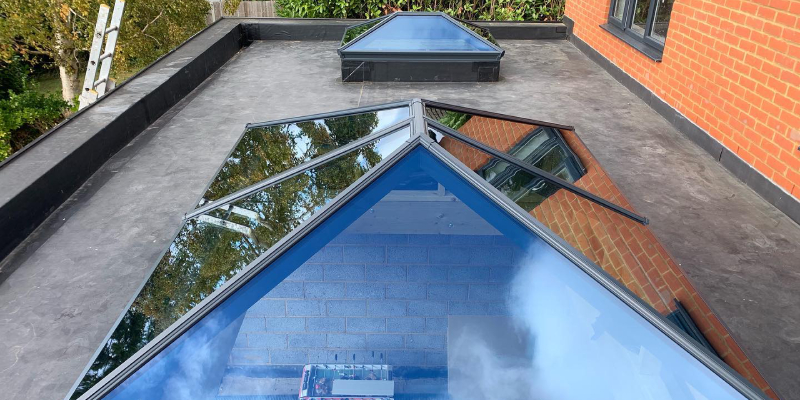
How Large Can A Conservatory Be Without Planning Permission?
You can build a conservatory under permitted development rights without needing planning permission, but there are specific size limitations that depend on your property type and location. For houses, a single-storey rear extension like a conservatory can extend up to 6 metres from the back wall if it’s a terraced or semi-detached house or up to 8 metres for a detached house. The conservatory cannot exceed 4 metres in height at its highest point, and the eaves (where the roof meets the walls) cannot be higher than 3 metres. Additionally, the conservatory cannot cover more than half of the original garden area around the house.
There are additional restrictions to consider that might limit the size further. The conservatory cannot extend beyond the width of the original house, and if your property is in a conservation area, Area of Outstanding Natural Beauty, or is a listed building, stricter rules apply that may require planning permission regardless of size. You’ll also need to ensure the conservatory is at least 7 metres from any boundary that faces a road, and it cannot have balconies, verandas, or raised platforms. While these permitted development rights allow for fairly large conservatories, it’s always worth checking with your local planning authority if you’re unsure, as rules can vary slightly between councils, and there may be local restrictions that apply to your specific area.
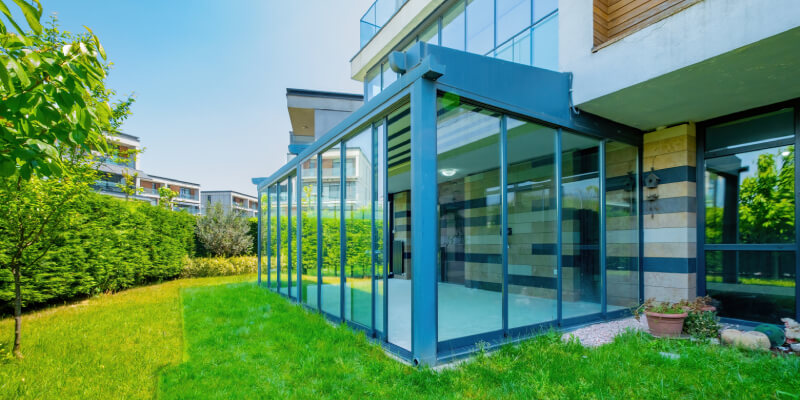
When Does A Conservatory Become An Extension?
The difference between a conservatory and an extension is the amount of glazing and the structural characteristics of the building. A conservatory is defined as having at least 75% of its roof area glazed and at least 50% of its wall area made up of glazing. This means the structure should be mostly transparent, allowing natural light to flood in. The moment you fall below these glazing thresholds, the structure legally becomes an extension rather than a conservatory.
It’s an important distinction because extensions are subject to different building regulations and planning requirements. As previously discussed, an extension can often be built without building regulation approval. However, an extension usually requires full building regulation compliance, including proper insulation, foundations, and integration with the main house’s heating system.
Extensions are also more likely to be subject to different development size limits and require planning permission. Suppose you’re planning a structure with a substantial solid roof, brick walls, or integration with your home’s main heating system. In that case, you’re likely looking at an extension rather than a conservatory, which means more stringent approval processes and building standards will apply.

How Do I Apply For Planning Permission For A Conservatory?
If your planned conservatory does require planning permission, you’ll need to file a planning application with your local authority. Each authority has its own system for filing an application, which can usually be found online. Most authorities now use the Planning Portal application system to accept requests for planning permission. This usually involves an application fee, and the total cost can be calculated using the fee calculator provided.
Along with an application form, you will need to include the following information:
- Location plan
- Site plan
- Elevations of both the existing and the proposed designs
- An ownership certificate
- A design and access statement
- An ‘Agricultural Holdings Certificate’ – this confirms whether any land relating to the application is part of an agricultural holding and is necessary even for non-agricultural use applications
- The correct fee – this depends on your location; the typical price for an extension in the UK is £206
A decision on your planning application should arrive within 8 weeks of submission. A successful planning permission application lasts three years from the date full consent is given. You must begin working within this time, but once you do, the planning permission lasts forever.

Do You Need Building Regulations For A Conservatory?
Building regulations ensure new buildings, conversions, renovations, and extensions are safe. To increase compliance levels, the Government has produced approved documents that offer guidance on how to meet these standards.
These regulations will apply if you’re adding an extension to your home. However, a conservatory is not usually subject to building regulations, provided it meets specific requirements:
- It’s built at ground level with a floor area of no more than 30 square metres
- At least 50% of the new wall and 75% of the roof are glazed or use translucent material
- Elevations of both the existing and the proposed designs
- The external walls or windows separate the conservatory from the house
- Any fixed electrical installations meet the requirements of the applicable building regulations
- The heating system is independent of your home, with separate temperature and on/off controls
In June 2022, new rules were enacted to reduce emissions released by property extensions. These regulations aim to mitigate overheating in homes by limiting solar gains. New conservatories must now be able to demonstrate they will not generate unwanted solar gains in summer if they are to avoid building regulations. Homeowners can achieve this by installing energy-efficient solar control glazing and ventilation systems like roof vents.
If you need clarification on whether your conservatory requires building regulations approval, contact us at CS Windows. With 20 years of industry experience, our team are building regulations experts.

Construction With Confidence
As with any construction project, in-depth planning is crucial before starting the build. Homeowners intending to build their own conservatory should spend considerable time understanding their development rights before the work begins. These rights can vary massively between properties, so finding those specific to your home is key.
That said, permitted development rights offer plenty of flexibility when constructing conservatories and single-storey extensions. Provided the conservatory follows the class A regulations, homeowners can usually build their desired extension without expressed consent from local authorities. Not only that, but most standard conservatories aren’t subject to building regulations. This means conservatory construction is typically far more straightforward than most development projects.
Navigating the world of planning permissions and building regulations can be very difficult without seeking expert advice. That’s why our expert team at CS Windows is just a phone call away. We’ve been building top quality conservatories in Harpenden and the surrounding areas for over 20 years and know how to keep our projects in line with all regulations. Get in touch for a free design consultation for complete transparency before moving forward with the build.

